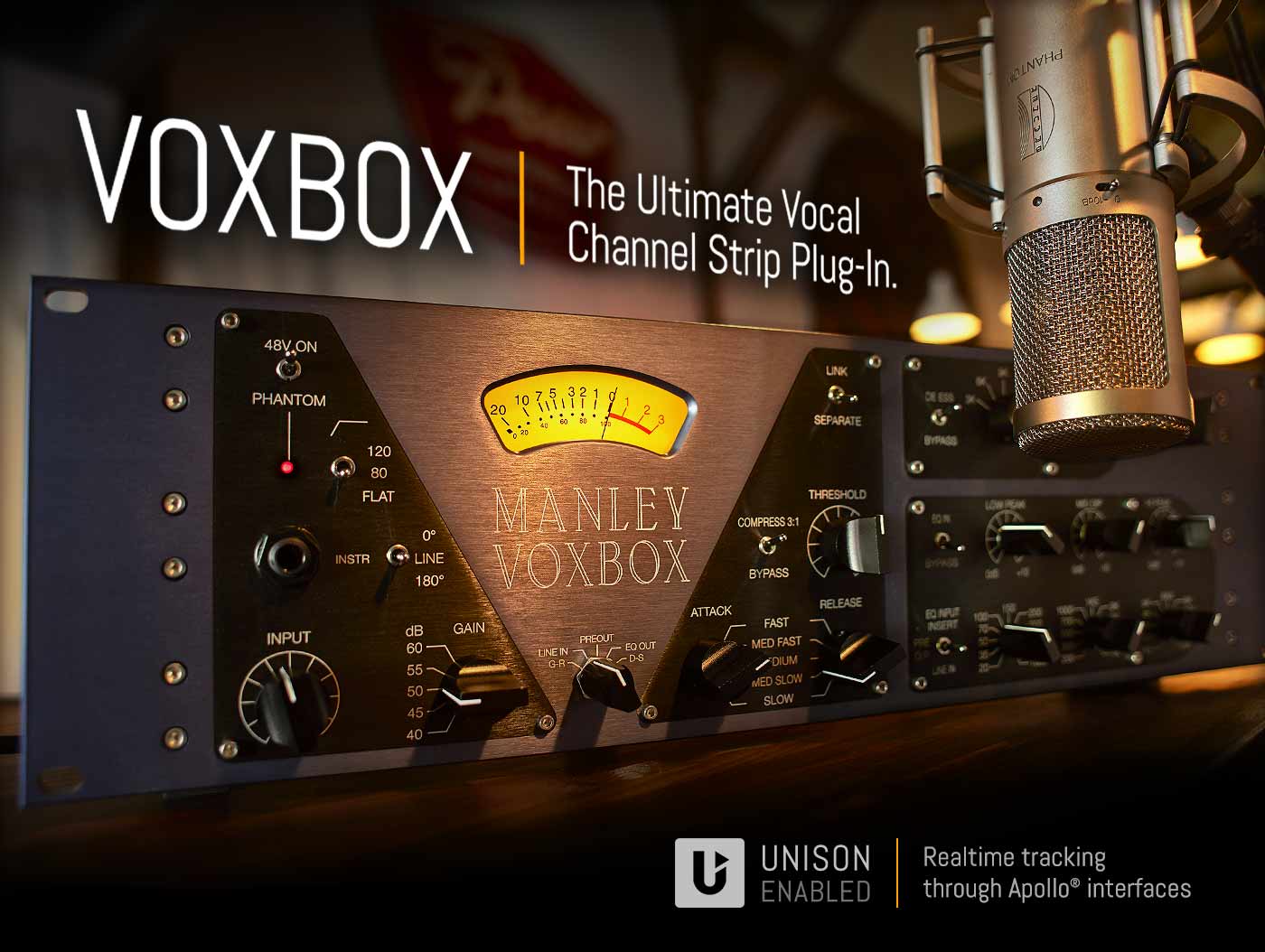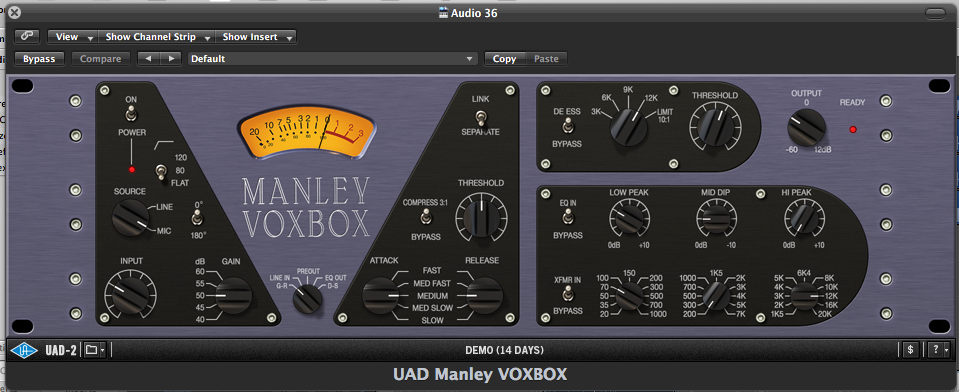UAD Manley VoxBox Review
Written by Paul LavigneAs the name suggests the UAD-2 Manley Voxbox is an emulation of the superb Manley Voxbox all-valve channel strip and features Universal Audio's Unison technology for UAD Apollo audio interfaces, which allows the precise emulation of the input gain stage, impedance load and more for an even more realistic result.
About the VoxBox
Visually similar to the original hardware it emulates, the UAD Manley Voxbox comprises a preamp section, a compressor, de-esser/limiter and a three-band passive EQ. Unlike most other channel strips, the compressor stage is located just after the input stage, before the preamp gain. This guarantees a more consistent level reaching the valve preamp gain stage when necessary. Using a Vactrol optical design for the gain reduction element and a fixed 3:1 ratio, the VoxBox offers a smooth compression, which suits tracking duties perfectly. The compressor stage features Attack and Release controls each with four settings (fast, medium fast, medium slow and slow). A Link/Separate toggle switch appears to separate the compression when used on stereo channels if required.

The preamp section provides up to 60dB of gain with no compression engaged. The preamplifier works by combining the input and the 5-position gain stages. A source button lets you choose between Line level inputs and Mic level inputs. It also features a High-Pass filter with a three-way toggle switch with settings providing Flat, 80Hz and 120Hz options, and a Polarity Reversal switch marked 0deg or 180deg. After the Preamp and EQ section is an incredibly easy De-esser/Limiter section which provides two controls only.
The first control lets you select the frequency for the de-esser and offers a choice of frequencies ranging between 3kHz, 6kHz, 9kHz, and 12kHz. The last step engages the limiter. The second control is a simple threshold. The last section is the 3-band EQ section, which is directly taken from the Manley Pultec MEQ-5 and comprises low and high boost and a mid-dip. Each band has 11 centre frequencies to choose from. Finally, a transformer switch engages an output transformer and add focus and pleasing harmonics.
VoxBox in use
I decided to start using the plug-in on a vocal track. Inserting the plug-in on the vocal track was already a massive improvement. I then proceeded to bypass each element to hear what everything was doing. With only the preamp stage left, the vocal sounded much better already with more weight air and presence and possibly even less mud.
 VoxBox Setting for Lead Vocals
VoxBox Setting for Lead Vocals
As I played around the input gain and pushed the vocal track into distortion territory, it sounded extremely musical and reminded me of Butch Vig's distorted vocal sound. Needless to say, I loved it! Playing with Mic and Line switch provided some subtle differences in tonality in addition to the gain difference. The compressor is smooth, like many vactrol optical compressors. It reminded me a lot of the Inwards Connections TSL-4 with attack and release time controls on top. On vocals and bass, I was able to get 5 to 7dB of gain reduction before it started to suffer, which is quite high for a tracking device. At lower settings, the compression sounds natural and musical.
The de-esser is well thought out, and the choice of frequency provided works well with most sources. On vocals, I was able to control "S" sounds without sounding processed. On acoustic guitar, it did a great job at removing some of the pick noises. The three-band EQ is a powerful tool to quickly shape the sound at source. Both Low and high boosting bands add gravitas and air in a couple of settings while the mid-dip band is great at removing mud, chest resonance or boxy rooms in just a few seconds. I also found it useful at removing some harshness in vocals. Finally, the transformer added a final sheen to the whole sound imparting a sense of richness and larger-than-life feel.
On my UAD-2 Satellite Duo, I was able to use three instances of the plug-in. Two on mono tracks and one on a stereo track. On a mono track, the UAD Manley VoxBox took an impressive 23% of DSP resources. Users tracking through the preamps of their UAD Apollo interfaces, won't see this as a problem, but don't expect to use it in a mix unless you have a lot of DSP power.


 +44 20 8445 2446
+44 20 8445 2446


